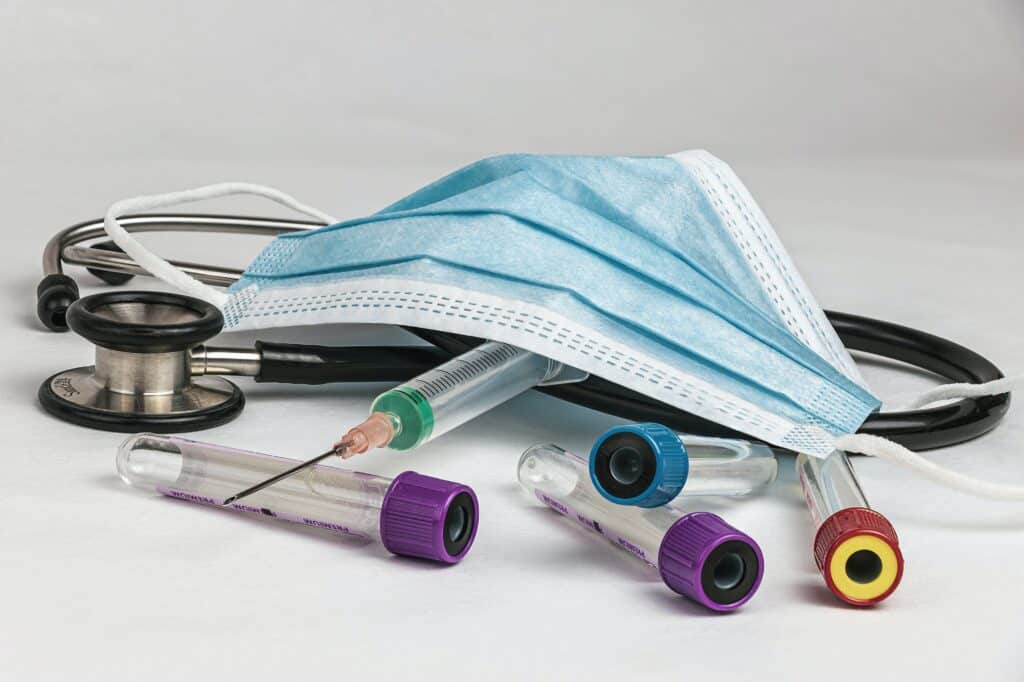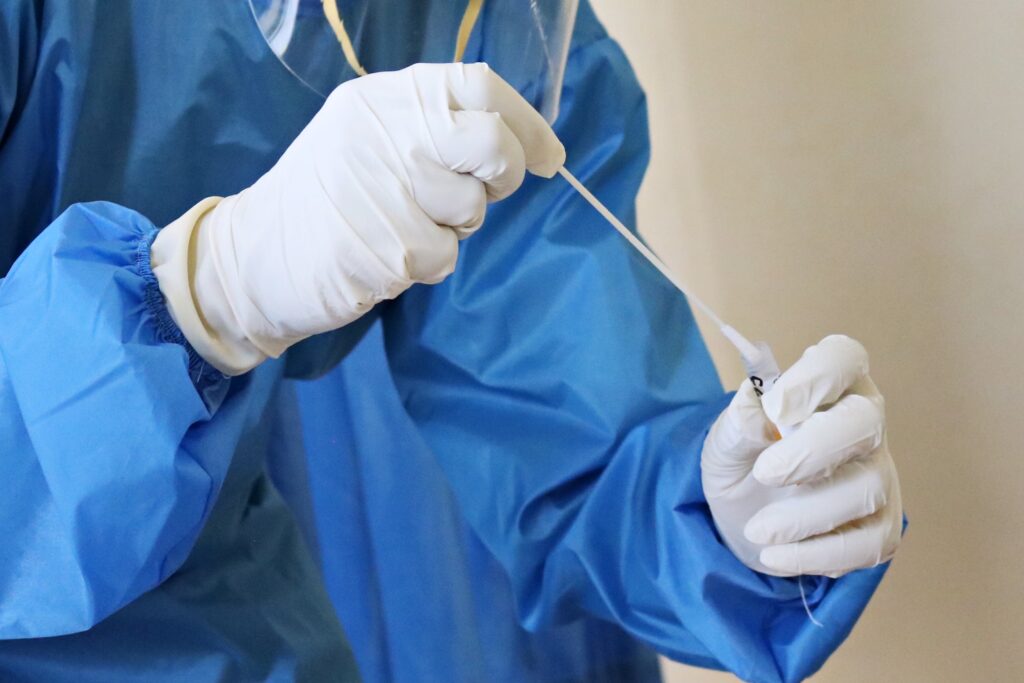According to the American Cancer Society (ACS), lung cancer is the second most common type of cancer diagnosed in both men and women – besides skin cancer. Early detection is essential, so what are the lung cancer first signs? How many types of lung cancer are there?
We’ve created a brief guide to give you some essential information.
Understanding the Different Types of Lung Cancer
This may seem obvious, but the most common type of lung cancer is found right in the lungs. Other rare forms may also occur in the lungs as well as the chest wall.
So, exactly how many types of lung cancer are there? There are a few different types of lung cancers, but most are either categorized as non-small cell lung cancer or small cell lung cancer.
Let’s go into further details about the different types:
Lung Nodules
These are small masses of tissue, that could be benign, precancerous, or metastatic tumors which have spread from other parts of the body. Usually, larger nodules are more likely to be cancerous than smaller ones. They are often found when patients are being checked out for unrelated symptoms like abdominal pain or an injury.
Non-Small Cell Lung Cancer
Non-small cell lung cancer is the most common type of lung cancer. This type grows and spreads more slowly than small cell lung cancer. The three main kinds of non-small cell lung cancer are named based the type of cells in the tumor:
- Adenocarcinoma: the most common type of lung cancer in the United States. It usually starts on the outer sections of the lungs and is the most common type of lung cancer in people who’ve never smoked.
- Large cell carcinomas: a group of cancers with large, abnormal-looking cells. May begin anywhere in the lungs and tend to grow quickly.
- Squamous cell carcinoma: also called epidermoid carcinoma. Often begins in the bronchi near the middle of the lungs.
For non-small cell lung cancers that haven’t spread beyond the lungs, surgery is required to remove the growth. Surgery may also be used in combination with radiation therapy and chemotherapy in cancers that are more advanced. These treatments can also be given before surgery to shrink tumors and prevent the spread of cancer cells through the bloodstream. This is called neoadjuvant therapy.
Small Cell Lung Cancer
Nearly all cases of small cell lung cancer are caused by smoking cigarettes. This is fast-growing cancer that spreads more quickly than other types of lung cancer. There are two different types of small cell lung cancer:
- Small cell carcinoma
- Combined small cell carcinoma
Surgery is most commonly used in non-small cell lung cancers and less frequently in small cell lung cancer, which tends to spread more quickly to other parts of the body. Chemotherapy is the most common treatment for small cell lung cancer, as it circulates throughout the body, killing lung cancer cells that may have spread outside the lung. Radiation therapy is frequently used in combination with chemotherapy when the tumor is confined to the lung and other areas of the chest.
Mesothelioma
This is a rare cancer of the chest lining, most often caused by asbestos exposure, and accounts for about 5% of all lung cancer cases. It develops over a long period of time, from 30 to 50 years, between exposure to asbestos and getting cancer.
Most people who develop mesothelioma worked in places where they inhaled asbestos particles. Once mesothelioma has been diagnosed, it is staged, which tells the patient and doctors how large the tumor is and where it has progressed beyond the initial stage.
Chemotherapy, radiation, and surgery can all be part of the treatment for mesothelioma.

Chest Wall Tumors
These are rare. Like other cancers, tumors found in the chest wall could be malignant or benign. Malignant tumors must be treated, whereas benign tumors will be treated depending on where they are located and the symptoms they cause. For instance, if a tumor is pressing against a lung, hindering breathing, then it must be treated.
Metastasized Cancer
Some cancers in the lung are the result of pulmonary metastasis – cancer that began in another part of the body and spread to the lung through the lymphatic system or bloodstream. Almost any cancer can metastasize to the lung. Some cancers that often spread to the lungs are:
- Bladder cancer
- Breast cancer
- Colon cancer
- Kidney cancer
- Neuroblastoma
- Prostate cancer
- Sarcoma
- Wilms’ tumor
Rare Cancer Types
Carcinoid Tumors
These are rare cancers that most often appear in the stomach or intestines, but can sometimes start in the lung too. This type of cancer can be classified as either typical or atypical.
- Typical carcinoids: grow slowly and don’t often spread beyond the lungs. 9 out of 10 lung carcinoids are typical carcinoids.
- Atypical carcinoids: grow faster and are slightly more likely to spread outside the lungs.
Carcinoid tumors are also sometimes categorized by where they start in the lung:
- Central carcinoids: from in the bronchi – the large airways located near the center of the lungs. Most lung carcinoid tumors start there and are almost always typical carcinoids.
- Peripheral carcinoids: develop in smaller airways on the sides of the lungs and are almost always typical carcinoids.
These tumors are mostly treated with surgery, however, chemotherapy and radiation therapy may be used in combination with surgery or if surgery isn’t a viable option.
Mediastinal Tumors
These are rare tumors that develop in the mediastinum – the area of the chest that separates the lungs and is surrounded by the breastbone in the front and the spine in the back.
These tumors can be benign or cancerous and form from any tissue that exists or passes through the chest cavity. Most of these tumors in children are benign, and cancerous in adults. Since they’re located in the chest cavity near the heart and major arteries, or near the spinal cord – both benign and malignant tumors must be treated.
There are several types of mediastinal tumors:
- Germ cell tumors: very treatable and often curable. Develop from reproductive cells and are often found in the reproductive systems of both men and women. When found outside the reproductive system, they may be called extragonadal germ cell tumors. It’s unclear how they move from the reproductive system to the mediastinum.
- Lymphomas: malignant tumors that start in the lymphatic system and include Hodgkin’s lymphoma and non-Hodgkin’s lymphoma. The lymphatic system is a complex network that helps protect and maintain the fluid environment of the body by filtering and draining lymph. In rare cases, it can originate in the lungs.
- Teratomas: malignant tumors made of cysts that contain one or more layers of embryonic cells. Layers are called ectoderms, mesoderms, and endoderms. It’s a rare cancer that occurs most often in young men in their 20s and 30s. Tumors are most often located in the chest area. In most cases, by the time the cancer is diagnosed, they have often spread. A number of other cancers often associated with these tumors include:
- Acute myelogenous leukemia (AML)
- Embryonal rhabdomyosarcoma (ERMS)
- Malignant histiocytosis
- Myelodysplasia (MDS)
- Small cell undifferentiated carcinoma
- Thymomas: rare cancers in which cancerous cells form on the outside of the thymus, a small organ in the upper chest that makes white blood cells. These are rarely malignant, grow slowly, and don’t often spread beyond the thymus. It is linked with myasthenia gravis and other autoimmune diseases.

Lung Cancer First Signs
Lung cancer signs early on could be as minimal as a slight cough or shortness of breath, depending on which part of the lung is affected. As lung cancer develops, these symptoms may become more severe. As with other types of cancer, lung cancer may also cause systemic symptoms, like loss of appetite or general fatigue.
Most lung cancers don’t cause symptoms until they’ve spread. If you go to your doctor when you first notice symptoms, your cancer might be diagnosed at an earlier stage, when treatment is more likely to be effective.
Most common symptoms of lung cancer:
- Cough that persists and doesn’t go away or gets worse
- Coughing up blood or rust-colored spit or phlegm
- Chest pain that worsens with deep breathing, coughing, or laughing
- Hoarseness
- Loss of appetite
- Unexplained weight loss
- Shortness of breath
- Feeling tired or weak
- Recurring infections like bronchitis or pneumonia
- New onset of wheezing
If the lung cancer spreads to other parts of the body it may cause:
- Bone aches
- Nervous system changes (headaches, weakness or numbness of arm or leg, balance problems, or seizures)
- Yellowing of the skin and eyes (jaundice)
- Swelling of lymph nodes
When to See a Doctor
Most of these symptoms are more likely to be caused by something other than lung cancer. But if you have any concerns, it’s important to see your doctor right away so that the cause can be identified and treated if necessary.
So when should you call your doctor?
If you are experiencing any of these symptoms, especially ongoing coughing, blood-streaked mucus, wheezing, hoarseness, or a recurring lung infection, you should see your doctor – you can use the Air Doctor app to find a specialist near you. You’ll get a thorough checkup, and you may also get x-rays or other tests.











